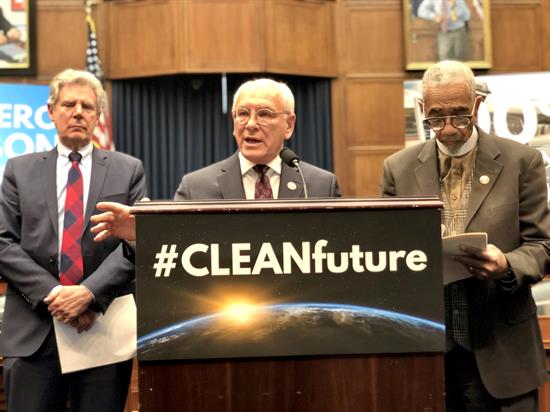- Home
- About
-
Constituent Services
- Academy Nominations
- Community Project Funding
- Congressional Art Competition
- Congressional App Challenge
- Congressional Commendation
- Event Invitation
- Grants
- Help with a Federal Agency
- Internships
- IRA Clean Energy Consumer Benefits
- Know Your Rights: Immigration
- Request a Meeting
- Request Surplus Books
- Presidential Greeting
- Visit Washington D.C.
- Issues & Legislation
- News
- 20th District
- Contact

Press Releases
Tonko Leads Congressional Hearing on CLEAN Future Act Superfund ProvisionsEnvironment & Climate Change Subcommittee examines how CLEAN Future Act protects communities through climate mitigation
Washington,
May 13, 2021
WASHINGTON—Congressman Paul D. Tonko, Chair of the Energy and Commerce Subcommittee on Environment and Climate Change, led the subcommittee today in a hearing on Superfund provisions and how the CLEAN Future Act works to protect communities from polluted sites more vulnerable to the effects of climate change. Watch Rep. Tonko’s full opening statement HERE or read below:
In 1980, Congress passed the Comprehensive Environmental Response, Compensation, and Liability Act, which is more commonly known as Superfund. Superfund is critical to protecting Americans’ health and the environment. Approximately 73 million Americans live within three miles of a Superfund site, and 21 million live within one mile of a site. Today, there are over 1,300 sites on the National Priorities List. These represent the most contaminated sites in the country. Superfund was established on the principle of the polluters pay. Responsible parties should foot the bill to clean up contaminated sites— not the taxpayers and definitely not the local communities that have to suffer the potential health consequences of living next to highly polluted properties. Unfortunately, EPA has not always had the resources to remediate orphaned sites, to compel responsible parties to clean up sites, or to conduct cleanups and then seek reimbursement from responsible parties. Hopefully, any future infrastructure bill considered in Congress will provide resources to accelerate this work and reinstate the Superfund tax. Because we know Superfund sites face serious and growing challenges that can threaten nearby residents if hazardous substances are left on-site. Many Superfund sites are vulnerable to extreme weather events, which are becoming more frequent and severe due to the effects of climate change. And in the future, we can expect these risks to grow due to greater flooding, storm surge, wildfires, and sea level rise. Certainly, climate mitigation, as proposed in the CLEAN Future Act, is critical to reducing these long-term risks. But extreme weather is already here, and it’s affecting sites today. In 2017, Hurricane Harvey damaged several sites containing hazardous substances. And a report by the Government Accountability Office identified 945 NPL sites that could be impacted by climate change. I am happy to welcome Mr. Gomez back to the Subcommittee to discuss that report and GAO’s other relevant work.
In that report, GAO found that EPA regional officials had not consistently integrated climate change or considered future environmental conditions in risk assessments and remedy selection and design. We must also recognize that climate risks are changing. It is imperative that existing sites, including sites with a remedy in place, continue to monitor and evaluate conditions. It is quite possible that a remedy selected 30 years ago did not adequately anticipate today’s— or future— climate realities. And as is always the case with Superfund, an ounce of prevention is worth a pound of cure.
Preventing industrial sites from becoming polluted in the first place is cheaper and safer than remediating them under Superfund. And reducing risks from existing Superfund sites is cheaper and safer than dealing with the health, environmental, and economic consequences of toxic releases. The CLEAN Future Act acknowledges that many Superfund sites are vulnerable to the effects of climate change and seeks to better direct the program to deal with this fact. The bill requires EPA to establish financial assurance requirements consistent with climate and extreme weather risks at sites. Sites would be able to reduce the amount of financial assurances required by taking steps to reduce risk. This is intended to incentivize prevention and limit future Superfund sites from being created in the first place. This section also amends the definition for “act of God” to ensure that releases due to the “plausible causal connection to climate change and its effects” are not shielded from liability. The bill also sets a ten-year deadline for the identification and remediation of federal NPL sites that are vulnerable to the effects of climate change. I thank our witnesses for joining us. I look forward to today’s discussion on how we can ensure the Superfund program is taking steps to protect communities in the face of increasing climate and extreme weather risks.
|
